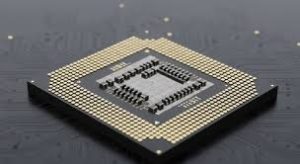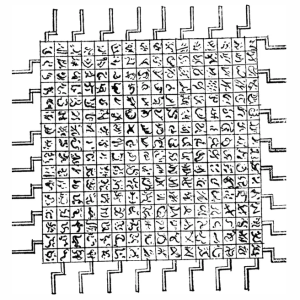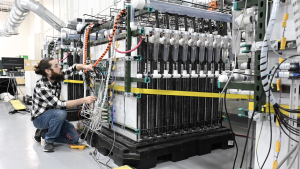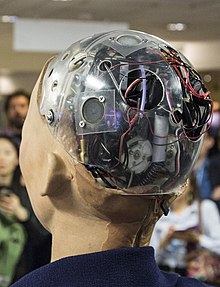“Commodore 128 Hardware Review”

By Scott Hamilton
I hope you all enjoyed last week’s story from my past, because this week I am taking it to the next level. Experiencing the Commodore 128 for the first time in over thirty years made me want to write a little more about it. So this week I am going to give you a technology review of this unique classic computer. I found a few early articles on the Commodore 128 that seem a lot like the same marketing hype we see with modern computers. I have done reviews in the past of new Intel processors, new Windows and Linux releases and various open source software projects, but reviewing a classic computer is something brand new for me.
I had completely forgotten that the Commodore 128 (C128) was the first computer to be marketed as three computers in one, and in fact is the only computer with that type of marketing. So I figured why not dig a little deeper into the story behind the marketing and see if it was just marketing or if the C128 was truly three computers in one. Let’s start right out of the C128 User’s manual.
In the User’s Manual the first chapter talks about the three operating modes of the C128. It had the retro Commodore 64 Operating mode, 100% compatible with all software released for the previous generation Commodore 64, which at the time was over 10,000 software titles. The second operating mode was the Commodore 128 mode, which was basically the Commodore 64 with extended memory and a newer version of Commodore Basic. The third operating mode actually turned this home computer into a computer capable of running the most popular business operating system of the day, CP/M.
Just being honest here, probably close to 80 percent of the time my C128 was operating in C64 mode, partly because I had close to 500 disks of software and documents for my Commodore 64 and was part of a computer club where everyone else owned the C64. I thought the C128 would be so much better from reading all the advertisements in Compute Magazine and just had to have the new thing. Really the only difference I remember was the loading time of the software had a dramatic improvement over the C64, but it had more to do with the upgraded disk drive than the computer itself. The C64 mode never caused me a single problem with running all of my old software and I never took the time to rewrite even my own homegrown software in the new C128 BASIC. The C64 ran Commodore Basic version 2.0 and the Commodore Basic 7.0, which was not backward compatible with version 2.0. This was probably one of the main downfalls of the C128.
The C128 mode was great because of its extended memory access and the ability to display lines of test 80 characters long rather than the older 40-character display of the C64. It granted the user access to 128K of memory expandable to 512KB, where the C64 and the similar operating mode on the C128 limited memory access to 64KB of memory, and without special software enhancements, even though the hardware was there, the C64 mode could not access the extra memory on the C128 board. To me this makes these two modes of operation in fact different computers, despite the fact they were actually running on the exact same Motorola 6502 processor. The read-only memory chip that controlled system access to memory was different between the modes containing two different versions of BASIC and a different mapping of the physical memory, making both the BASIC programs and more advanced Machine Language programs require a complete rewrite to work on the two different modes.
The third CP/M operating mode was truly a completely separate computer within the same case. CP/M mode booted the system from a Ziglog 80 (Z80) CPU, which only shared the memory chips with the C64 and C128 modes of operation. It even had its own audio and video output devices. I am sure with some minor hacks to the motherboard, maybe a slight hardware modification, you could have run both CP/M mode and C64 mode at the same time, but probably not the C128 mode because the C128 mode would have required use of all available memory while the CP/M mode could run with reduced memory.
CP/M mode was actually one of my favorite modes, even though I didn’t use it very much, because it mimicked the high-end business machines at most university computer labs in the day. In fact I used this CP/M mode to write much of the software projects while working towards a degree in computer science in the early 1990s. This is quite impressive for a computer that was manufactured in 1985 and discontinued in 1989. It was a very capable computer system for the day and I would even say among the most advanced computing systems in history. Just to touch on the topic, CP/M stands for Control Program/Monitor which was one of the first disk based operating systems, which really started the idea that an operating system did not have to be integrated into the computer, but could be separate. Next week I will write about CP/M and give you a little piece of very important computer history. Until next week stay safe and learn something new, or in this case old.
Scott Hamilton is an Expert in Emerging Technologies at ATOS and can be reached with questions and comments via email to shamilton@techshepherd.org or through his website at https://www.techshepherd.org.







This is such a valuable article! 👏 I really like how you’ve managed to explain the topic in a clear and practical way—it feels authentic and easy to relate to. Reading it gave me some new perspectives that I can actually apply. I’m especially interested in content like this because at meinestadtkleinanzeigen.de we’re running a classifieds and directory platform in Germany that connects people with services, businesses, and opportunities across many categories. Insights like yours remind me how powerful it is when knowledge and connections come together. Thanks for sharing—looking forward to more of your work! 🚀
Fantastic read! 👏 I really appreciate how clearly you explained the topic—your writing not only shows expertise but also makes the subject approachable for a wide audience. It’s rare to come across content that feels both insightful and practical at the same time. At explodingbrands.de we run a growing directory site in Germany that features businesses from many different categories. That’s why I truly value articles like yours, because they highlight how knowledge and visibility can create stronger connections between people, services, and opportunities.Keep up the great work—I’ll definitely be checking back for more of your insights! 🚀
💡 Excellent work on this ultimate guide! every paragraph is packed with value. It’s obvious a lot of research and love went into this piece. If your readers want to put these 7 steps into action immediately, we’d be honoured to help: 👉 https://meinestadtkleinanzeigen.de/ – Germany’s fastest-growing kleinanzeigen & directory hub. • 100 % free listings • Auto-sync to 50+ local citation partners • Instant push to Google Maps data layer Drop your company profile today and watch the local calls start rolling in. Keep inspiring, and thanks again for raising the bar for German SEO content!